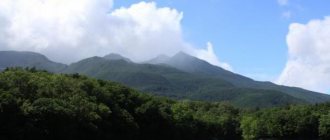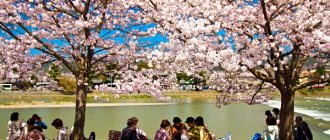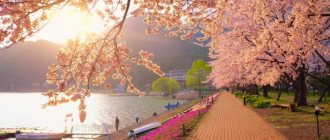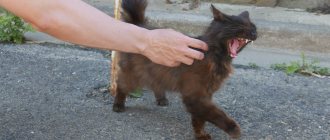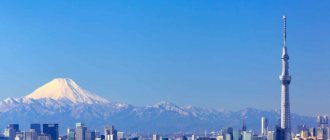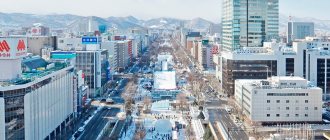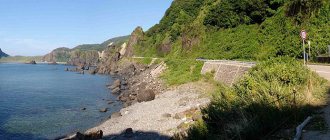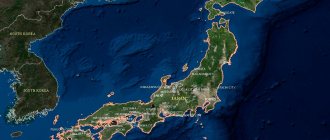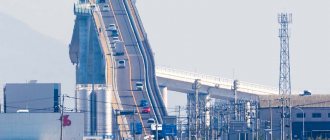Cities in Hokkaido
Hokkaido is simply not as large and densely populated as Honshu, for example, mainly due to its vast and unspoiled nature. You won't find huge cities with millions of inhabitants here. However, there are a number of cities that you should visit if you decide to travel around Hokkaido. These include the capital Sapporo, the romantic port city of Otaru, historic Hakodate and Japan's northernmost place Wakkanai.
Sapporo
Sapporo is the fifth largest city in Japan. Almost 2,000,000 people live in the island's capital. Sapporo is very similar to other major cities in Japan. There are many modern high-rise buildings and infrastructure here. Sapporo is much greener than Tokyo or Osaka, for example. The city has wide avenues with extensive city parks. Did you know that this city is mainly (internationally) known for its beer? Sapporo breweries are highly recommended for lovers of good beer. In addition, a beer festival takes place every year in July and August, and in winter sculptors compete to build giant ice palaces and ice sculptures.
Otaru
Otaru is by nature a port city. This gives the city a romantic and historical character. The city has beautiful canals and authentic department stores thanks to the centuries-old commercial culture that prevails there. It's almost like a small, Japanese version of the canals of Amsterdam! This town has a unique Victorian feel with canals, department stores and historical accents such as lampposts. In winter, it's nice to see the Otaru Snow Light Festival or the Nikka Whiskey Yoichi Distillery (very tasty Japanese whiskey)
Hokkaido is a wild and vast island with a variety of nature. You will find wild bears, wolves and other animals unique to Japan
Hakodate
Hakodate is the first city you'll encounter in Hokkaido when you arrive by ferry from Honshu. This city is also famous for its so-called morning market. Here you will find the most exotic types of fish and fruits. Not far from Hakodate there is a vast nature reserve called Umanuma National Park, where many monkeys live in winter. In the city of Hakodate in 1854, with the help of the Dutch, a fort was built.
Goryōkaku Fort (五稜郭, Goryōkaku), which is based on the Western star-shaped design.
Wakkanai
Population 44,000 people.
Wakkanai or "Windy City" is the northernmost city of Hokkaido and therefore also Japan. In winter it is much warmer here than in Yuzhno-Sakhalinsk, but the Japanese consider it a pole of cold. In the autumn and winter months, seals swim here. From May to November, you can also visit the other Wakkanai islands by ferry. It is also home to the indigenous Ainu community. The Ainu are a people, the oldest population of the Japanese islands.
Distinctive features of the Ainu culture.
From June to September (sometimes from May to October - depending on natural conditions) ferries run regularly to Sakhalin (to the city of Korsakov). Many residents know a little Russian.
Three scary stories from Hyakumonogatari Kaidan
Geography
Hokkaido is located in the northern part of Japan. The northern coast of the island is washed by the cold Sea of Okhotsk and faces the Pacific coast of the Russian Far East. The territory of Hokkaido is almost equally divided between mountains and plains, and the mountains are located in the center of the island and stretch in ridges from north to south. The highest peak is Mount Asahi (2290 m). In the western part of the island, along the Ishikari River (length 265 km), there is a valley of the same name, in the eastern part, along the Tokachi River (156 km) there is another valley. The southern part of Hokkaido forms the Oshima Peninsula, separated by the Sangar Strait from Honshu. Between these islands, the Seikan railway tunnel is built under the seabed.
The easternmost point of Japan is located on the island - Cape Nosappu-Saki. The northernmost point of Japan is also located on it - Cape Soya.
The largest city of Hokkaido and the administrative center of the prefecture of the same name is Sapporo.
Nature of Hokkaido
Hokkaido, like the rest of Japan, is very mountainous. This coupled with the cold weather during the winter months means that the weather on this island has huge contrasts. Temperatures can reach 30 degrees in summer and cold enough in winter to practice all types of winter sports.
Everything you know about ninjas is wrong!
Hokkaido National Parks
In Hokkaido you will also find a number of so-called national parks. Take Akan National Park for example. This national park is truly unique. Here you will find volcanoes, bubbling lakes and dense forests. You can simply wander through the forest breathing deeply, or engage in other outdoor activities such as rafting, rock climbing, cycling, fishing.
Hokkaido is home to Japan's most pristine wilderness area, Shiretoko National Park . You will only be allowed here if you prove that you are an experienced traveler or adventurer. Here you will also find many volcanoes, mountains and geysers. Are you not an experienced hiker but still want to visit Shiretoko National Park? Then you can go hiking with a group or book a bus trip through the reserve.
Some other beautiful parks are Takino Suzuran Hillside National Park, Lake Onuma, Onuma Quasi-National Park and Toya Caldera and Usu Volcano Global Geopark.
History of Hokkaido
Like the rest of Japan, Hokkaido has a rich history. It is important to note that since Hokkaido has never had many inhabitants, no significant events have occurred here either. However, the history of the island is very interesting and there are many traces of the past that can be found today.
Kyushu Island (九州)
About 20,000 years ago the island was first inhabited. The people who came to live here were the Ainu Moshiri. They lived until the 16th century completely separated from the rest of Japan. Hokkaido had almost no contact with the rest of Japan. Since the 17th century it has increasingly become part of Japan. For example, the 1970 Winter Olympics were held in Sapporo, and a bill was passed in 2008 to protect and preserve Ainu culture.
Hokkaido Island
When visiting Japan, you should definitely check out Hokkaido - you will get a lot of pleasure visiting the onsen. Onsens are specially designed natural hot springs. They are very popular both among the Japanese themselves, and are the highlight of the Japanese resort for foreigners (according to this, the residents of the Kuril Islands and Sakhalin are not surprised by this, but flying to the Kuril Islands is the same as flying to Japan), Hokkaido is also known for its ski resorts. Hokkaido's climate is very different from the other three islands.
A short excursion about the island:
The island of Hokkaido is only 40 km from Sakhalin, but these 40 kilometers are the surface of the sea. Hokkaido is an island in northern Japan, the second largest after Honshu. Hokkaido is connected to the island of Honshu by the Seikan Tunnel, which is laid at a depth of 240 meters and is located 100 meters below sea level. The length of the underwater part of the tunnel is 23.3 kilometers. The total length of the tunnel is almost 54 kilometers and today the Seikan railway tunnel is one of the longest tunnels in the world.
The island of Hokkaido is located in the very north of the country and is the least developed in relation to the other islands of Japan: Honshu, Kyushu and Shikoku. This is due to such factors as: the harsher climate of Hokkaido, territorial remoteness, which was the reason for not so close communication with the main territory of Japan.
Until the mid-20th century, the lack of any means of crossing made communication between the islands quite expensive. Moreover, this part of the territory of Japan became seriously interested only at the end of the 19th century (1868-1869), when clashes occurred between the Japanese Empire and the Republic of Ezo, which existed at that time on the territory of the island, which bore the same name as the republic (Ezo Island, more early name - Matsumae). As a result of the military conflict, the Republic of Ezo ceased to exist and on August 15, 1869, the island of Ezo was renamed Hokkaido.
The island of Hokkaido is divided from the island of Honshu by the Sangar Strait, the width of the strait ranges from 18 to 110 kilometers, and the length is 96 kilometers. The shores of the islands (Hokkaido and Honshu, separated by a strait, are mountainous and covered with forest. The territory of the island of Hokkaido consists of fifty percent graceful and rocky mountains and fifty percent plain. In Hokkaido, unlike other islands, the ratio of plains to mountains is very high. Others The islands of Japan cannot boast of having plains, since almost 80-90 percent of the territory is occupied by mountains, which makes land in Japan especially valuable and expensive.
From the north, the island of Hokkaido is washed by the Sea of Okhotsk, and the island is also washed by the Sea of Japan and the Pacific Ocean.
In addition to the main islands of Japan, its territory includes more than 6,800 small islands, so the following islands stretch along the island of Hokkaido:
- Rebun and Rishiri
- Teuri and Yagishiri
- Okushiri
- Oshima
- Kojima
The islands are full-fledged territorial units in which the infrastructure is also highly developed, agriculture, folk crafts, fishing and tourism are actively developing. The islands have transport connections with the main islands of the country and have airports and seaports on their territory. Communication with the “ground” is maintained by airplanes, sea transport, and ferries. Municipal transport is well developed on the islands, there are all the necessary shops, hotels, and many onsen.
As a rule, the origin of the islands is volcanic, however, the territory of the islands contains a lot of vegetation, and national parks are located on some of the islands.
The area of the island of Hokkaido is 83,500 square kilometers, the population is 5,600,000 people, the population density is one of the lowest in Japan - 67 people per square kilometer, for comparison on Honshu - 452 people per square kilometer.
The climate in Hokkaido, by Japanese standards, is very harsh, winters are snowy and long, the absolute minimum recorded on the island is minus 41 degrees (in the city of Asahikawa), although this was more than 100 years ago. But the average temperature on the island remains around 10 degrees below zero throughout the winter. Therefore, the Winter Olympic Games and the Asian Games were held here several times. The Japanese themselves come here to ski resorts and enjoy participating in the snow festival, which is held in Sapporo every February. In summer it is rainy here, the air humidity is 95-99% and the air temperature reaches forty degrees Celsius.
The main nine cities of Hokkaido contain 60% of the island's population:
- Sapporo (approximately 1,920,000 people)
- Asahikawa (approximately 350,000 people)
- Hakodate (approximately 280,000 people)
- Kushiro (approximately 180,000 people)
- Tomakomai (approximately 170,000 people)
- Obihiro (approximately 170,000 people)
- Otaru (approximately 130,000 people)
- Kitami (approximately 120,000 people)
- Ebetsu (approximately 120,000 people)
The northern part of Hokkaido is covered with coniferous forests, mainly fir, cedar and spruce, the undergrowth is dominated by dense thickets of bamboo, birch trees and many shrubs also grow on the island, and broad-leaved trees grow in the southern part of the island. Among the animals that live on the island are: sable, ermine, weasel, brown bear, and fox. They say their bears are especially ferocious.
The photographs published in this article were taken in the beautiful park of the Toya settlement. Amazingly quiet and beautiful place. The trip to Hokkaido was my first acquaintance with Japan. It was unforgettable.
but they look so cute, they love it when they treat you to apples
Photos taken in Shikotsu-Toya National Park
In Japan, everything is done for the people, you wanted to go to the mountains, but there they already laid out smooth paths and built a ladder for you so that you don’t get your feet knocked down.
Japan is a country that almost constantly experiences minor earthquakes and a country that is constantly under threat of natural disasters. But harsh climatic conditions do not prevent the Japanese from being cheerful and open people. Children are taught from early childhood how to behave in emergency situations. And in the event of a large-scale tragedy, which, unfortunately, has befallen the Japanese people more than once, they remain persistent, united and unbending.
In the meantime, the volcano is sleeping, at its foot there is a city and local residents live their lives in a measured manner.
The photographs were taken in the village of Toyako, Iburi District, Hokkaido Governorate.
I offer you a short video about this amazing place.
Housing
Are you planning a trip to this beautiful island? Then it is important that you find suitable accommodation. Luckily, there is no shortage here in Hokkaido. Cities like Sapporo and Otaru offer a variety of hotels and hostels. There are also many accommodation options around nature reserves. It is important to reserve on time, then you will pay less and be sure of an overnight stay. The picturesque landscape has many campsites and open parking areas.
Why is it dangerous for bachelors in Japan to pick up a red envelope from the ground?
Facts about Hokkaido
- Although Hokkaido is an island, the island has a predominantly so-called "continental climate". This means that winters are cold and summers can be very hot.
- The island was until the 17th century isolated from the rest of Japan.
- The island has its own culture and indigenous population: the Ainu Mukhsiri
- In Hokkaido you will find some of the most beautiful and primitive areas in Japan. These places are very popular among winter sports enthusiasts.
Categories: Curious facts about the Japanese.
Views: 4,022
Share link:
- Tweet
- Share posts on Tumblr
- Telegram
- More
- by email
- Seal
Liked this:
Like
Hokkaido
Reconstruction of Jomon dwellings at the Sannai-Maruyama site Settlement of the Ainu at the end of the 19th century: the island of Hokkaido by this time was still completely inhabited exclusively by representatives of this people Reconstruction of Ainu dwellings in the settlement of Nibutani
The oldest artifacts found on the territory of Hokkaido belong to the Late Paleolithic era. These are stone flakes made by primitive man 25-20 thousand years ago. They were found at the Shukyubai-Sankakuyama mountain site (Japanese: 祝梅三角山遺跡) in the city of Chitose and the Shimaki site (Japanese: 嶋木遺跡) in the village of Kamishihoro. 15-12 thousand years ago, during the Mesolithic era, the technique of making stone blades spread to Hokkaido, which is associated with the emergence of a culture of microlithic tools. At the same time, the inhabitants of the island learned to use bows and arrows [ source not specified 1030 days
].
The appearance of ceramics in Hokkaido dates back to the 8th millennium BC. e. It is represented by the Ainu Jomon culture. On the island, this culture found its expression in two styles of tableware design - southwestern and northeastern. The first arose under the influence of the style of the Tohoku region of the neighboring island of Honshu, and the second took shape independently. The dishes from the southwestern part of Hokkaido were flat-bottomed, while those from the northeastern part were sharp-bottomed. Around 6 millennium BC. e. pointed-bottomed dishes gave way to flat-bottomed ones, and old styles evolved into new ones - cylindrical (Japanese: 円筒式土器) in the southwest and northern-cylindrical (Japanese: 北筒式土器) in the northeast. In the 3rd-2nd millennium BC. e. residents of Hokkaido adopted the lush Kamegaoka style (Japanese: 亀ヶ岡式土器) from neighboring Honshu, which supplanted regional styles [ source not specified 1030 days
].
At the turn of our era, the Yayoi agricultural culture spread to Honshu and to the south. Hokkaido remained outside the influence of this culture. Its inhabitants continued to live by hunting and gathering, were semi-sedentary and adhered to the traditions of the previous Jomon era. Their culture was called post-Jomon. During the 3rd-4th centuries, under the influence of the southern islands, the inhabitants of Hokkaido began to use metal tools and make jewelry from precious stones [ source not specified 1030 days
].
Starting from the 7th century, the northeastern regions of Hokkaido (the coast of the Sea of Okhotsk) were influenced by the Okhotsk culture. Its bearers used stone, iron and bone tools. A large settlement and burial ground of these northern hunters was found at the Moyoro site (最寄遺跡) in the city of Abashiri. The latest monuments of the Okhotsk culture date back to the 9th century. [ source not specified 1030 days
]
In the 8th century, a new culture, Satsumon, emerged from the post-Jomon culture. Its carriers were the proto-Ainu. Like the Jomon, the proto-Ainu were primarily hunter-gatherers, although they practiced primitive agriculture. They made their weapons and tools from iron, less often from stone or bone. The proto-Ainu traded with the neighboring Nivkhs in the north and the Japanese in the south. [ source not specified 1030 days
]
It is believed that the first written mention of Hokkaido was made in the Nihon Shoki
, completed in 720.
According to the chronicle, Abe no Hirafu, who sailed north at the head of a large fleet from 658 to 680, came into contact with the Misihase and Emishi tribes. The island of Watarishima (渡島), visited by Hirafu, is considered modern Hokkaido [ source not specified 1030 days
].
Arai Hakuseki, who lived during the Edo period, believed that Watarishima was the same as Ezo (i.e. Hokkaido
)
During the Nara and Heian periods (710−1185), the inhabitants of Hokkaido (Ainu) engaged in active trade with the Dewa province of Japan. In the Middle Ages, the inhabitants of Hokkaido began to be called Ezo, and the island itself was called Ezochi (Japanese 蝦夷地, “land of Ezo”)[18] or Ezogashima (Japanese 蝦夷ヶ島, “Ezo Island”). The main occupation of the Ezo people was hunting and fishing, and they obtained rice and iron through trade with Japan [ source not specified 1030 days
].
During the Muromachi period (1336−1573), a Japanese settlement appeared in the south of the Oshima Peninsula. As the number of settlers grew, disagreements began to arise with the local population, which over time escalated into military conflict. Japanese leader Takeda Nobuhiro killed the Ainu leader Koshamain in 1457. Nobuhiro became the founder of the Matsumae clan, which had the exclusive right to trade with the Ainu throughout the Azuchi-Momoyama and Edo periods (1568−1868). The Matsumae clan ruled the Matsumae domain (Japanese: 松前藩matsumae han
) from its founding in 1604 until the end of the Edo period in 1868 [
source not specified 1030 days
].
Matsumae Takahiro, ruler of Matsumae during the late Edo period.
December 10, 1829 - June 9, 1866 The Ainu staged an uprising against feudal rule. The last major uprising was the Xiagusyain Rebellion in 1669−1672. In 1789, the Menasi-Kunashir uprising was also suppressed. In 1799−1821 and 1855−1858, in response to the threat from Russia, the shogunate introduced direct rule on the island. Shortly before the Meiji Restoration, the Tokugawa Shogunate, concerned about a possible Russian invasion, began preparing its northern borders for defense and took Ezochi under its full control. During this period, the policy towards the Ainu softened a little, but the general management style remained the same[19].
The island was known as Ezochi until the Meiji Restoration. Immediately after the end of the Boshin War in 1868, a group of supporters of the shogunate led by Enomoto Takeaki temporarily occupied the island, proclaiming the creation of the Republic of Ezo (Japanese: 蝦夷共和國edzo kyo:wakoku
), but the uprising was suppressed in May 1869. Ezochi came under the administration of the Haate Prefectural Government of Haate Prefecture (Japanese: 箱館府
haate fu
).
In 1869, the Development Authority (Japanese: 開拓使kaitakushi
) was formed;
the island became known as Hokkaido[20] and was divided into the following provinces: Oshima, Siribeshi, Iburi, Ishikari, Teshio, Kitami, Hidaka, Tokachi, Kushiro, Nemuro and Chishima[21]. Ainu, the indigenous population of Hokkaido
The main goal of the Japanese administration was to secure the Hokkaido region from the possible advance of Russia in the Far East. It was headed by Kuroda Kiyotaka. His first step in office was a visit to the United States, during which he hired Horace Capron, President Grant's Secretary of Agriculture. From 1871 to 1873, Karpon tried to introduce Western methods of farming and mining, but, without achieving much success, he was forced to return home in 1875. In 1876, another American specialist, William Clark, founded the Sapporo Agricultural College (Japanese: 札幌農學校sapporo no gakko
).
Although Clark stayed in Hokkaido for only one year, he left a positive impression and contributed to the development of local agriculture, as well as the spread of Christianity.[22] Known in Japan for his call to students: “Guys, be ambitious!” (English: Boys, be ambitious!
), these words can be found as inscriptions on buildings in Hokkaido to this day. During this decade, the population of Hokkaido grew from 58 thousand to 240 thousand people[23].
In 1882, the administration was abolished and Hokkaido was divided into three prefectures: Haate Prefecture (Japanese: 函館県haate ken
), Sapporo Prefecture (Japanese: 札幌県
sapporo ken
) and Nemuro Prefecture (Japanese: 根室県
nemuro ken
).
In 1886, after the abolition of prefectures, the region came under the jurisdiction of the specially created Hokkaido Agency (Japanese: 北海道庁hokkaido: chō
:).
In 1947, after the entry into force of a new law on local autonomy, Hokkaido received the status corresponding to the status of a prefecture. Under the Japanese Cabinet in 1949, the Hokkaido Development Agency (Japanese 北海道開発庁hokkaido: kaihatsu chō
) was created by the Prime Minister of Japan to directly administer the territory.
The agency was absorbed by the Ministry of Land, Infrastructure, Transport and Tourism in 2001. The Hokaido Department (Japanese 北海道局hokkaido: kyoku
) and the Hokkaido Regional Development Department (Japanese 北海道開発局
hokkaido: kaihatsu kyoku
) under the ministry still play a large role in the development of infrastructure projects on the island [
source not specified 1030 days
].
In the extreme southwest of the Oshima Peninsula, in 1604, the feudal principality of Matsumae was established, a vassal state of the Tokugawa shoguns, into whose possession the entire island was given. It was called Ezo at that time, and its indigenous population were the Ainu, whose conquest by the Japanese lasted more than two centuries. In 1712−1713, based on questions from the Ainu and the stories of the Japanese, who were brought to Kamchatka by a storm in 1710, the Cossack Ivan Petrovich Kozyrevsky compiled his description of the island[24]. In the spring of 1779, Russian sailors and fishermen, led by Antipin and Shabalin, headed to the shores of Hokkaido in seven canoes. On June 24 of the same year, they entered the Notkomo harbor in the northeast of the island, where they collected yasak from the Ainu living there and actually accepted 1,500 people into Russian citizenship[25]. This fact caused indignation among the Japanese[26]. In the fall of 1792, a Russian expedition led by Adam Laxman visited northern Hokkaido, although the Japanese forbade the Russians from trading with the Hokkaido Ainu[27].
